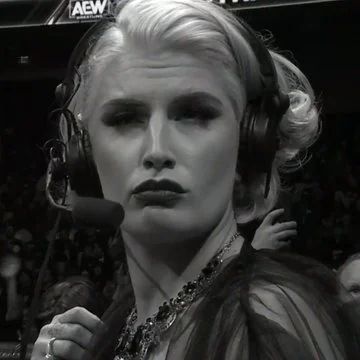For a full year I have lived in a house that has one of these.
It’s a hot summer and I’m delighted that it can not only heat but also keep my place cool!
Now I got an email from my electricity provider that during the last weeks (I was at home most of the time) my electricity consumption was roughly twice of what it usually is.
Hence my question: compared to its heating capabilities, does a heat pump use much more electricity for cooling?
I’m not looking for a scientific breakdown.
edit:
Thanks for all replies so far. Cooling seems to be trickier than heating and I should keep my windows closed, which just feels wrong during summer… but apart from that cooling does not use more energy than heating.
They’re great, aren’t they?
Heat pumps normally use more electricity to heat than to cool, so it’s surprising that the opposite was happening for you.
My bills have always been lower in the summer. The only time the bills have been unusually high was when there was a problem with the connection between the main electrical supply and the pump, causing it to keep restarting and use more energy.
Why would they use more energy in one direction versus another? This doesn’t really make sense to me. Heating and cooling is just swapping which element is the condenser and which element is the evaporator.
Like other commentators have already stated, the conditions (temperature difference) in winter and summer are different.
However, if the temperature differences are the same, only reversed, heating requires less energy than cooling, as the (electric) power is also transformed to heat which in winter, when in heating mode is also usable heat, while in summer, it adds to the heat that needs to be discharged outdoors.E.g. a heat pump with a electric power consumption of 1 kW and a COP of 5 transfers 5 kW usable heat, but has only a cooling power of 4 kW (and thus, an EER of 4).
There’s the answer I was looking for.
Do you think your example is realistic? That would be 20% - a relevant difference. Not ALL the electrical power consumption will be turned into inside heat I guess?
The line pressures are much higher when heating so the compressors are having to work harder. Plus some units have resistive heaters in the compressors that come on during low temps.
Why would they use more energy in one direction versus another? This doesn’t really make sense to me. Heating and cooling is just swapping which element is the condenser and which element is the evaporator.
The gradient determines that. Moving heat energy from inside ambient 25°C to outside ambient 30°C is easier than moving heat energy from outside ambient 5°C to inside ambient 20°C, for example.
Heat pumps move heat. In the summer, it’s pulling heat from inside and moving it outside and the opposite of that in the winter.
Basically, the temperature differential is what makes the difference. The larger the differential, the more energy it has to use.
In the winter, when it’s 30 degrees (F) outside, and you want it to be 70 inside, that’s 40 degrees it has to move. In the summer when it’s 90 degrees outside, and you want it at 70 inside, that’s only 20 degrees.
Air source heat pumps, as the name implies, pull heat from (and exhaust heat to) the ambient air. When it’s really cold in the winter, there’s less ambient heat to move inside, so it has to run longer. Some (all?) heat pumps also have an auxiliary resistive heating element to make up the difference which lowers efficiency quite a bit.
Granted, newer heat pumps can work well down to lower temperatures without having to engage the aux heat than the older ones I’m familiar with, but in a nutshell, that’s why they can potentially use less energy in the summer.
If nothing else, the temperature range differential needed is very different from cooling in the summer to heating in the winter. Apologies for my Celsius friends. I think most humans consider 70 degrees to be comfortable. If its 80 degrees outside the differential is only 10 degrees (80-70=10). For most people the hottest outside temperature they may have is 100 to 110 degrees. So we’re looking at a differential of 30 to 40 degrees the heat pump would need to keep.
Now lets look at winter during the coldest months where I am 0 degree days are pretty common and -10 to -30 can happen occasionally. So the normal differential is a 70 degrees! And the uncommon differential can be as bad as 100 degrees! Further, I believe heating/cooling follows the inverse square law which means for each degree of temperature change it doesn’t just increase the effort linearly, but rather exponentially. So the farther away the different the harder it is to reach it, and we’ve just seen that winter is much farther away (larger differential) than summer.
I know for my home’s heat pump I use between 2kW and 4kW running for normal cooling (its a variable speed compression in mine) while in the depths of winter it usually is around 4kW and when really cold outside gets as high as 8kW (in pure heat pump mode). Because the differential is so much larger in the winter, I’m asking it to do much more work.
Besides the temperature differential that everyone else mentioned, there’s also sometimes the need to defrost the outside bits, which means running the heat pump in reverse and undoing a bit of the heating it already did.
Heat pumps are air conditioners that can be run backwards. That’s it. You’re running an air conditioner, and it’s summer.
I get that. But I come from a country where that isn’t a common thing because summers are short and not too hot (at least pre-climate-change).
Their point was that it’ll use the same amount of energy as it does to provide heat.
Kinda sorta. Air conditioners seemed like a more common phrase to reference, so I just clarified that it’s the same thing.
Arguably it would be cheaper to cool than to heat, because the whole point is to move heat from one place to another. The heat is easy to collect in a hot house vs a cold winter outdoor setting, and you probably don’t need to change the temperature as much (if you target, say, 20C and you experience 35 in summer and -5 in winter, you have a 15 degree difference in one direction and 25 in another)
Hence my question: compared to its heating capabilities, does a heat pump use much more electricity for cooling?
In my experience, they use slightly more electricity heating than cooling. I retrofitted my 120 year old home with inverter style heat pumps about a year ago and have been watching the energy use during temperature extremes.
They do seem a lot more susceptible to drafts than traditional central heat and air units; So making sure your doors and windows are sealed, and the attic (if you have one) is properly ventalated, will go a long ways towards helping their efficiency.
Thanks.
They do seem a lot more susceptible to drafts
This seems pertinent. I like to keep windows open - it feels weird not to do that in summer.
I only open the windows when the temperature is at least several degrees lower outside than in and run the AC when it’s not during the summer. I also have blackout honeycomb shades mostly closed during the day to help block the heat. I’m really hoping you dont mean that you have windows cracked while running your heatpump.
It’s exactly the same as an air conditioner, and no: it uses the same amount as when it’s heating. The compressor is either running, or it’s not, plus or minus a little bit depending on how hard it’s actually working to compress the gases at the temperatures and pressures involved. Unless you have a variable speed or dual stage compressor, in which case the power usage may be somewhat proportional to the amount of cooling or heated actually needed since it will slow down for smaller amounts of heating or cooling. Otherwise, the main difference in power usage and power efficiency is how long it runs to achieve the desired temperature.
it uses the same amount as when it’s heating
Thanks, I’ll take your word for it. So - if it cools the place from, say, 29 degrees outside to 22 degrees inside, that’s the same as warming it from 15 degrees outside to 22 inside?
And yeah, it’s been running a lot. I guess there’s no mystery here. Only the next bill will tell (the email sneakily did not tell me any amounts, just some colorful graph. They want me to use their app).
So - if it cools the place from, say, 29 degrees outside to 22 degrees inside, that’s the same as warming it from 15 degrees outside to 22 inside?
Oh my, not at all. If it runs for 1 hour continuously in cooling mode that’s going to be electrically largely equivalent to running for 1 hour continuously in heating mode (again, provided it’s not variable speed). Even then the electrical load will vary slightly according to various conditions. The actual temperatures achieved though, depend entirely on the thermodynamics of the system (both inside the pump itself and your whole house and the environment it’s in) which are extremely dynamic and complicated. There are almost no simple, linear relationships you can use to approximate what is actually going on. Even the approximate calculations that HVAC installers do called “Manual J” are hugely idealized and oversimplified. You’ve got things going on like solar heat gain through windows, heat losses through insulation, and heat transfer through gaps in the insulation, air losses through vents and doors and windows and gaps that are specific to your individual home and that you can’t even really measure accurately. It’s a very difficult thing to even attempt to compute or simulate no matter how much we try to develop models that accurately estimate things. On a larger scale, this is why we still struggle to accurately predict the weather.
Only the next bill will tell
That’s a reasonable position. You can make all the estimates you want but at the end of the day the only thing that really matters is what you get billed for and that will tell you the truth about what’s actually happening in your house, environment, climate, and situation. I would be confident that given the same temperature conditions you really won’t see much practical difference in electrical usage between a heat pump in cooling mode and an air conditioner (if anything they tend to be somewhat more efficient just due to better design and higher build quality). But you won’t know the true situation until all the measurements are actually done and posted to your bill, and even then you won’t be able to directly compare them because there are so many other variables that are always changing.
It’s more efficient, but it’s still gotta use the juice. Just built a house and made sure we insulated the walls and our power usage is miniscule, even with all the appliances running. When talking about electric bills you gotta prioritize what gives you the most bang for the buck and it’s always insulation first. Also, don’t sleep on solar! During the day when it’s hot, you don’t even need to power your whole house with it, just use it to offset some of the power you use on those really smothering days.

Here’s our usage in kWh last year. In summer we use the heat pump in reverse to cool the house.
Is it a single zone or multi zone setup? If it’s multi make sure one zone isn’t heating while the other is cooling.
Make sure the filters are clean and the indoor units aren’t icing up.
No, they don’t. The increase on electric consumption is because of another factor in your house. If family is on summer vacation that could be why. Sometimes people forget that by virtue of having free time, they spend more time inside and generally use more gadgets, items, electronics, etc. for entertainment. That do increase the electricity use. A working and studying family spend over half of the day elsewhere. That’s halve of the same electric use as a family that’s watching tiktok, playing videogames and watching TV inside the entire day.
Your edit says you where keeping the windows open??? The hell, are you trying to cool the outside as well? Do you leave them open in the winter too to help heat the air outside?
Yeah, heat pumps use a lot of energy when running. They are the most efficient way to cool your home though.
Only an electric water heater or clothes dryer compares to the amount of electricity they use.
You can improve your homes insulation or set your thermostat higher if you want to reduce the amount used.






